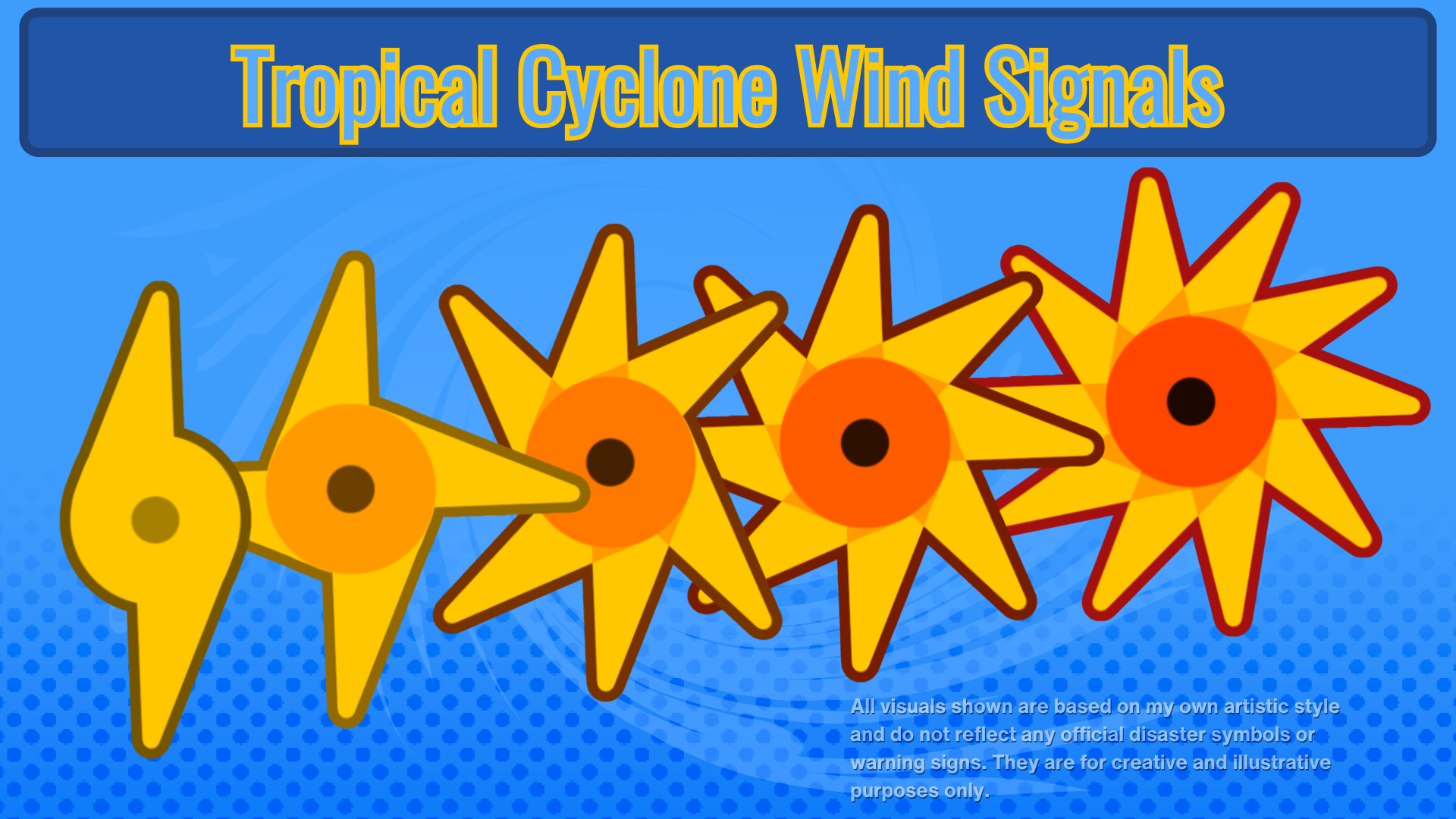What is a Tropical Cyclone?
A tropical cyclone is a large-scale weather system that forms over tropical or subtropical oceans and is not associated with frontal boundaries. It features a clearly organized circulation at any atmospheric level. In different parts of the world, these storms are known by various names—such as hurricanes, typhoons, or simply tropical cyclones—depending on the region.

Tropical Cyclone Signal Levels

Signal No. 1
Tropical Depression
Description: Winds at this level are generally not destructive but can still cause light damage to unsecured objects. Expect occasional gusts of wind, especially in open or elevated areas. Rainfall may become more frequent, leading to minor flooding in low-lying areas. This is a warning that a tropical cyclone is approaching, and conditions may worsen if it intensifies or moves closer.
Wind Speed: 39–61 km/h - Comparable to a brisk bicycle ride or a fast-moving scooter
What to Do:
- Secure lightweight outdoor items (e.g., laundry, plants).
- Stay informed through official weather updates.
What NOT to Do:
- Avoid unnecessary outdoor activities, especially in open areas.
- Do not underestimate the potential for sudden weather changes.
Signal No. 2
Tropical Storm
Description: Gale-force winds strong enough to topple small trees, damage banana plants, and rip off poorly installed roofs. Signs, tarpaulins, and other lightweight materials can be blown away. Power interruptions may occur due to fallen branches or damaged lines. Moderate to heavy rains are expected, potentially causing localized flooding and landslides in hilly or mountainous areas.
Wind Speed: 62–88 km/h - Similar to the speed of a city car driving on a main road
What to Do:
- Reinforce doors and windows.
- Charge electronic devices and prepare emergency kits.
What NOT to Do:
- Avoid traveling, especially by sea.
- Do not ignore evacuation advisories if issued.
Signal No. 3
Severe Tropical Storm
Description: These winds are dangerous and capable of tearing off parts of roofing, uprooting large trees, and causing widespread damage to structures made from light materials. Transportation (land, air, and sea) is heavily affected. Flash floods and landslides are likely. This signal usually triggers preemptive evacuations and suspension of work and classes in vulnerable areas.
Wind Speed: 89–117 km/h - Comparable to the speed of a fast-moving train
What to Do:
- Evacuate if residing in low-lying or coastal areas.
- Stay indoors and keep emergency supplies accessible.
What NOT to Do:
- Do not venture outside unless absolutely necessary.
- Avoid using electrical appliances during the storm.
Signal No. 4
Typhoon
Description: Typhoon-force winds can cause severe and widespread destruction. Even strong buildings may suffer roof and window damage, and poorly built structures may collapse. Trees are uprooted, roads may become impassable, and power and communication outages are widespread. Extremely heavy rains bring life-threatening floods and landslides. This is an emergency situation requiring full disaster preparedness.
Wind Speed: 118–184 km/h - Equivalent to the speed of a small airplane during takeoff
What to Do:
- Seek shelter in strong buildings or evacuation centers.
- Ensure all emergency supplies are ready.
What NOT to Do:
- Do not stay in light structures or near glass windows.
- Avoid using vehicles unless it's an emergency.
Signal No. 5
Super Typhoon
Description: Winds of this magnitude are catastrophic. Virtually all exposed and lightly-built structures will be flattened. Even well-built houses may sustain serious structural damage. Debris flying at high speeds pose a lethal threat. Storm surges, widespread flooding, and massive landslides are almost certain. Total power loss and communication blackouts may last for days. This level demands full evacuation of at-risk communities and strict adherence to safety protocols.
Wind Speed: ≥185 km/h - Comparable to the speed of a high-speed bullet train
What to Do:
- Evacuate immediately if advised by authorities.
- Stay in the most secure part of your shelter.
What NOT to Do:
- Do not attempt to go outside under any circumstances.
- Avoid using communication devices unless necessary to conserve power.